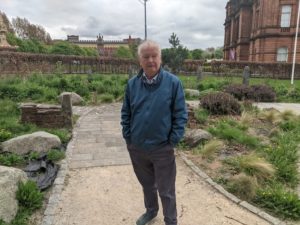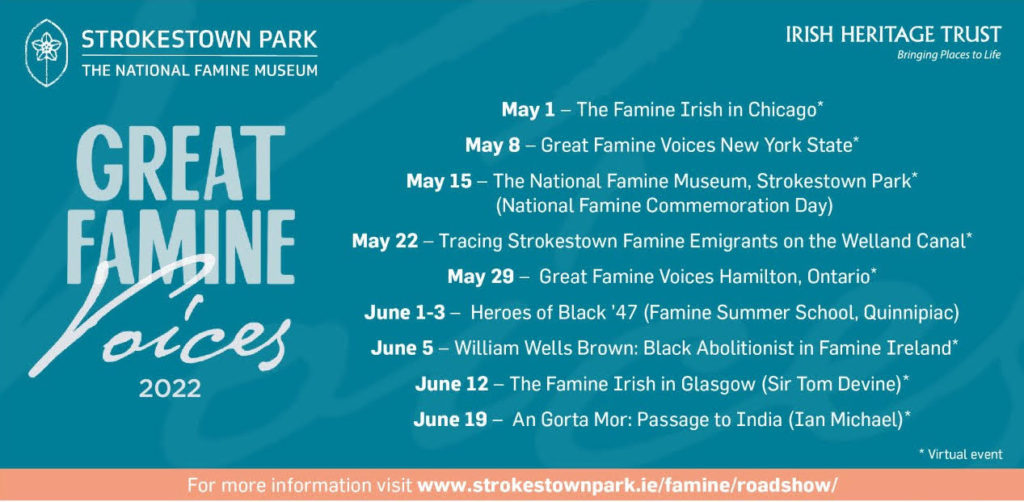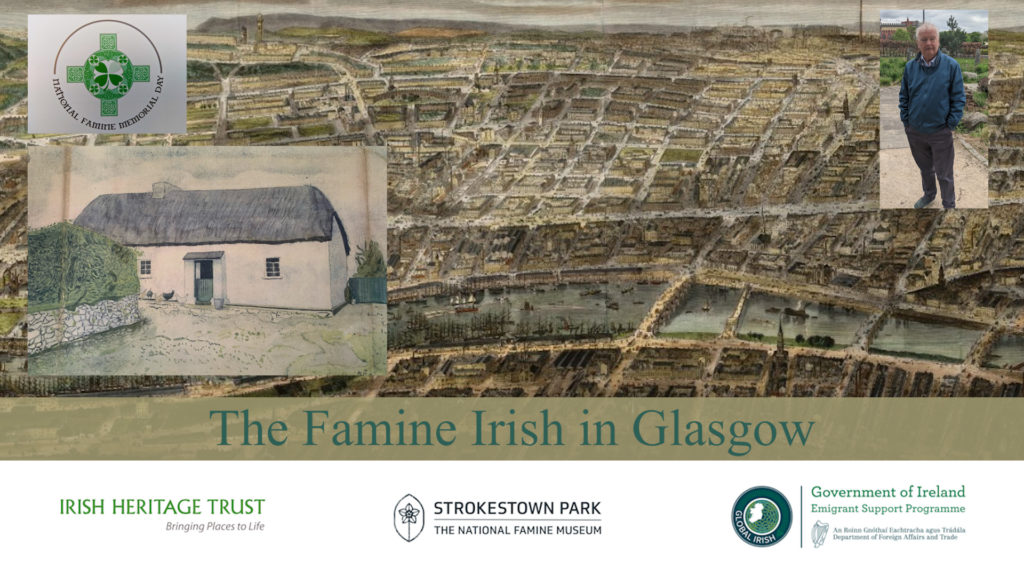The Famine Irish in Glasgow features Sir Tom Devine, Emeritus Professor of Scottish History and Palaeography at the University of Edinburgh. Sir Tom looks at the Irish emigrants who arrived in Scotland’s largest city and explains how they were viewed and treated by the authorities, and by other important institutions and organisations.

Sir Tom’s four grandparents emigrated to Scotland from Ulster in the 1890s and in the video he discusses this and his upbringing in the industrial town of Motherwell in the county of Lanarkshire.
Professor Sir Tom Devine is Scotland’s pre-eminent historian and is a leading expert on the Irish and the Famine in Irish in Scotland. Refugees from the Famine in Ireland first arrived in Scotland in significant numbers in late 1846 and from then until 1851 around 80,000 Irish settled in the country. Most of the impoverished Irish landed at Glasgow – in 1847 alone over 50,000 entered the city. The Glasgow authorities, and the middle class in general, were extremely alarmed by this influx, as it coincided with high levels of unemployment in the city and with the arrival of a smaller number of paupers escaping the potato blight in the Western Highlands and Islands of Scotland. The Famine Irish were mostly responsible for the increase in begging and overcrowding in Glasgow and were blamed for the typhus epidemic in the city in 1847 in which thousands of the new arrivals died.
The authorities in Glasgow adopted a number of measures to deal with a crisis that threatened to overwhelm the city. At the beginning of 1847, a soup kitchen was established, and this was soon feeding between 4,000 and 5,000 people a week. Temporary poor relief was given to the destitute Irish, and temporary fever hospitals were eventually opened. Thousands were sent back to Ireland by the civic authorities. Indeed, between 1847 and 1852, 41,275 destitute Irish were shipped back to Ireland from Scotland – the overwhelming majority from in and around Glasgow.
The response of the local authorities and of other agencies and institutions to the Famine Irish in Glasgow during 1847 and into 1848 helped the city to avoid the devastation that many had feared during the first half of 1847. An improvement in the economy also helped matters.
By the early 1850s, the number of destitute Irish arriving in Glasgow had declined significantly. Most of the Famine Irish who settled in Scotland found employment in Glasgow and in other manufacturing and industrial towns in the western lowlands.
Famine Irish immigrants attracted considerable hostility from sections of Scottish society and this contributed to an increase in both anti-Catholic and anti-Irish sentiment in the country.
One of the most remarkable legacies of the Famine Irish influx to Glasgow was the establishment of the Celtic Football Club. Celtic was founded in November 1887 by members of the Catholic Irish community in the east end of Glasgow, primarily to raise funds to pay for meals for poor Catholic Irish children in the area, many of them descendants of Famine emigrants. The driving force behind the establishment of the club was Brother Walfrid, a member of the Marist Brothers. Born Andrew Kerins in Ballymote, County Sligo in 1840, Walfrid lived through the Famine years in Ireland before moving to Glasgow in 1855.
Celtic soon became one of Scotland’s most successful football clubs. It was supported by the Catholic Irish in Glasgow, and elsewhere in the west of Scotland. Every year since 2009, Celtic FC honors Ireland’s National Famine Commemoration Day with special crests on the players’ jerseys that are then auctioned to raise funds for charity. It is a fitting tribute to the Famine Irish in Scotland.
Great Famine Voices 2022 Schedule

The Famine Irish in Glasgow is part of the Great Famine Voices 2022 season, hosted by the National Famine Museum, Strokestown Park, and the Irish Heritage Trust, with funding from the Government of Ireland Emigrant Support Programme. All of the 2022 Great Famine Voices films may be viewed on the Strokestown Park website.


Leave a Reply